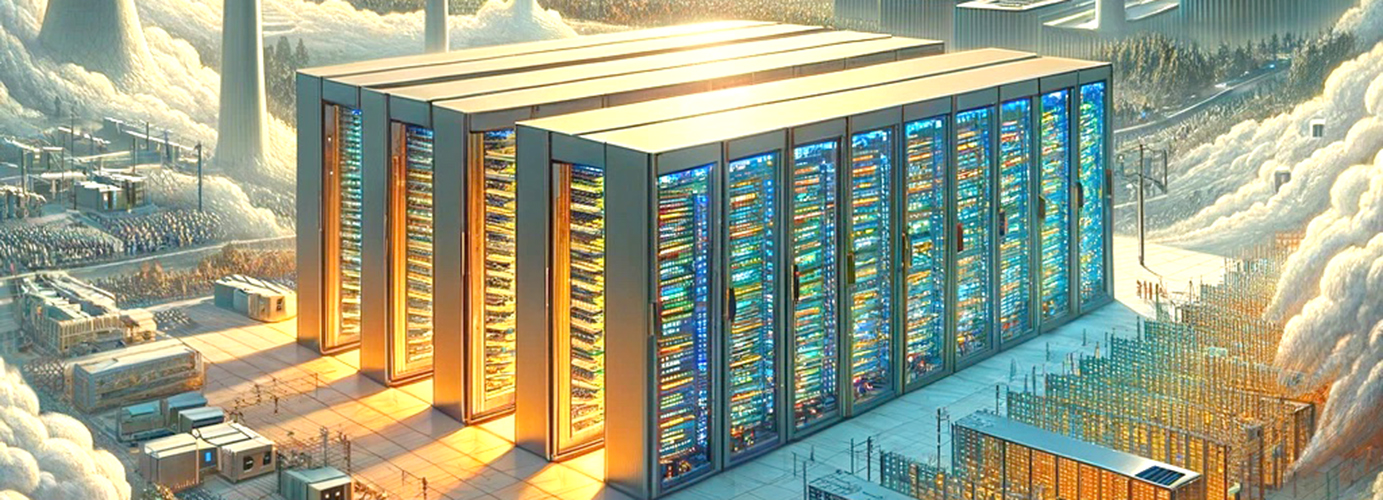Data centres improved greatly in energy efficiency as they grew massively larger

In 2022, data centers consumed an estimated 240 to 500 terawatt-hours of electricity, constituting approximately 1-2% of the global electricity consumption, a notable increase from 0.5% in 2000. At the lower end of the spectrum, this surpasses the total electricity usage of Australia, while at the higher end, it exceeds that of France, ranking as the 10th largest electricity consumer globally
Increased demand for digital services is driving the expansion of larger data centers. Amazon, Google, Meta, and Microsoft nearly doubled their electricity usage to 72 terawatt-hours in 2021, as reported by the International Energy Agency (IEA). By 2022, these four companies controlled almost 80% of global hyperscale data center capacity. Meanwhile, significant growth is also observed in China, where massive data centers are being constructed in Hohhot, Inner Mongolia, with Huawei, China Telecom, and China Mobile among the key operators.
Nevertheless, the internet has demonstrated remarkable efficiency in its electricity consumption. Despite a 78% increase in internet users, a 600% surge in global internet traffic, and a 340% rise in data-center workloads between 2015 and 2022, the energy consumed by data centers increased only modestly, by 20-70%, according to the IEA.
Enhanced efficiency stems from advancements in computational thriftiness. Over the years, the energy needed for equivalent computations has halved every two-and-a-half years, a phenomenon recognized as Koomey’s law. Additionally, as data centers have expanded, a larger proportion of their energy consumption has been allocated to computation, further contributing to efficiency gains.
Regrettably, certain economies of scale have led to a depletion of another vital resource: water. By the 2000s, as data centers transitioned into densely packed arrays of more potent servers, they necessitated robust industrial-grade air conditioning to manage the heat generated during data processing. These systems demand substantial quantities of water for air cooling, particularly in hot locales like Singapore, exacerbating the water requirements of data centers.
As chip performance intensifies, so does their heat output. The denser packing of transistors accelerates electron movement, leading to heightened heat generation. While this boosts computational efficiency per unit, it also escalates the need for chip cooling. In 2022, Google and Microsoft consumed 32 billion liters of water predominantly in their data centers, equating to the water consumption of approximately 700,000 individuals in a prosperous nation. (Generally, disposing of used water is more economical and energy-efficient than recycling it through cooling ponds.)
Data-center giants are investing in emerging energy technologies despite their financial risks. In the late 2000s, Google invested in over two gigawatts of early solar and wind projects to drive down costs.
Renewable energy and data centers face compatibility challenges due to the need for a consistent power supply. Nuclear technologies like fusion or small modular reactors offer potential solutions. Microsoft signed a power purchase agreement with Helion Energy for fusion power by 2028. Google also explored geothermal energy, completing a 3.5-megawatt plant with Fervo in November. While these technologies are not yet commercially scalable, similar challenges existed for wind and solar energy 15 years ago.
There is a pressing need for long-term energy storage, akin to saving energy for future use. Presently, during grid failures, data centers rely on batteries for a brief period until methane-fueled generators activate. Tech giants like Google and Microsoft are investing in alternative storage solutions. Hydrogen, for instance, offers the potential to power data centers for days, not just minutes, due to its high energy density. Data centers can also mitigate variable load issues common in renewable energy grids through "load shifting," where tasks like AI model training are shifted to different times or locations. Google has developed a system to schedule computation tasks during times and places with cleaner grids.
Tech firms are also spearheading climate-friendly innovations like durable carbon dioxide removal (CDR) technology, which involves extracting carbon dioxide from the atmosphere and securely storing it. Microsoft aims to achieve carbon negativity by 2030 through initiatives like durable CDR and water purification. Amazon plans to attain net-zero carbon emissions by 2040, with data centers powered solely by renewable energy by 2025. Apple commits to achieving 100% carbon neutrality across its data centers and supply chains by 2030. Meta aims to achieve net-zero carbon emissions by 2030.
The tech giants would earn commendation if they meet these targets, particularly as the internet approaches a critical point in energy consumption, potentially accelerating beyond current levels. One driving factor is the growth of edge computing, which involves deploying numerous smaller, less efficient data centers closer to users. Analysts predict the global edge data-center market will triple in value to $30-40 billion by the decade's end.
Another significant factor is AI's substantial energy demand. AI systems require far more computational power than traditional tasks, with the energy consumption of training and using AI models being considerable. The tech giants are heavily investing in AI, recognizing its pivotal role in the future. Many leading AI firms have close ties to data-center companies. Microsoft, a major cloud provider deeply involved in AI research, plans to allocate over $50 billion annually to cloud infrastructure. Meta expects to invest more than $30 billion in data centers in 2024. Startups like CoreWeave are rapidly expanding their data center infrastructure to support AI development.
In the end, achieving carbon neutrality in data centers necessitates transitioning to carbon-free electricity grids. This requires collaboration between governments and tech giants, but it presents a formidable challenge. The complexities of climate change geopolitics mirror those of the internet: intricate and chaotic.